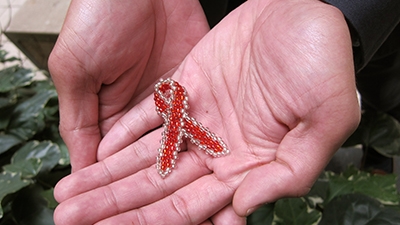Thirty years ago, newspaper headlines were rife with news of a virus that even doctors were unfamiliar with. Little was known about a strange epidemic that later would take the lives of music legends such as Freddy Mercury and Héctor Lavoe and several Hollywood stars.
Today we know that the disease does not distinguish by sex, race or religion. It is the same illness that has killed 25 million people worldwide. Nowadays it is an old acquaintance whose name is no longer a novelty: AIDS.
The characteristics of the epidemic differ by region. 69% of people infected with HIV live in Sub-Saharan Africa, for example, and only half of them receive antiretroviral therapy. By contrast, in Asia the epidemic is concentrated among sex workers and intravenous-drug users.
“In the case of Latin America, the virus is prevalent among men who have sex with men. The epidemic is kept hidden due to the stigma of people living with HIV and discrimination with respect to sexual orientation,” says Fernando Lavadenz, senior health expert at the World Bank.
The Latin American and Caribbean region has substantially reduced HIV prevalence during the past decade. “It went from being the region with the worst burden of HIV-AIDS death and illness in the 2000s to being the fourth most affected region after Sub-Saharan Africa, south Asia and east and central Europe in 2010,” says Lavadenz.
Access to treatment is the key
Today, the HIV epidemic in the region has stabilized: more than 1.6 million Latin Americans are affected, but according to UNAIDS data, AIDS-related deaths declined by 36 % between 2001 and 2012. The World Health Organization (WHO) reports that currently, 600,000 more people are receiving antiretroviral therapy in the region as compared with 2003.
Argentina is a case in point. “The disease burden has been significantly reduced by several factors, including, and perhaps most importantly, the free, universal access to antiretroviral drugs,” explains Lavadenz.
A World Bank study carried out with support from UNAIDS reported that thanks to available treatments, at least 4,300 people were saved from illness in Argentina between 2001 and 2010. The country allocates 80% of total HIV/AIDS spending to care and treatment, compared to a regional average of 75%.
“It is also a question of knowing how to spend well,” says Lavadenz. The study found that despite the high cost of antiretroviral drugs in Argentina, the National AIDS program is cost beneficial.
“The benefits were not only in lives saved but also in savings of over US$ 748 million in Argentina, estimating the costs saved in the complicated treatment of people with advanced disease and the transmission that was avoided,” says the expert.
“This is a successful case in which HIV treatment was the best prevention and a good lesson for Latin America,” he says.
Laws in favor
Along with Brazil, Argentina was one of the first countries to provide free treatment to people living with HIV. The National AIDS Law, among other mechanisms, mandated the government and all other health providers to provide medical, pharmacological and psychological treatment to people living with HIV.
“In Argentina, more than 80% of reported HIV cases have received treatment, which the WHO defines as universal access,” says Lavadenz.
Additionally, the equal marriage law – Argentina is the first Latin American country to support same-sex marriage – and the gender identity law – the only law in the world that upholds the rights of transsexuals– have favored HIV prevention and treatment.
“These laws made the country a pioneer in reducing the stigma,” says Lavadenz. “Less stigma, less shame in going to a hospital, taking a test or receiving medical attention in a democratic, non-discriminatory way.”

